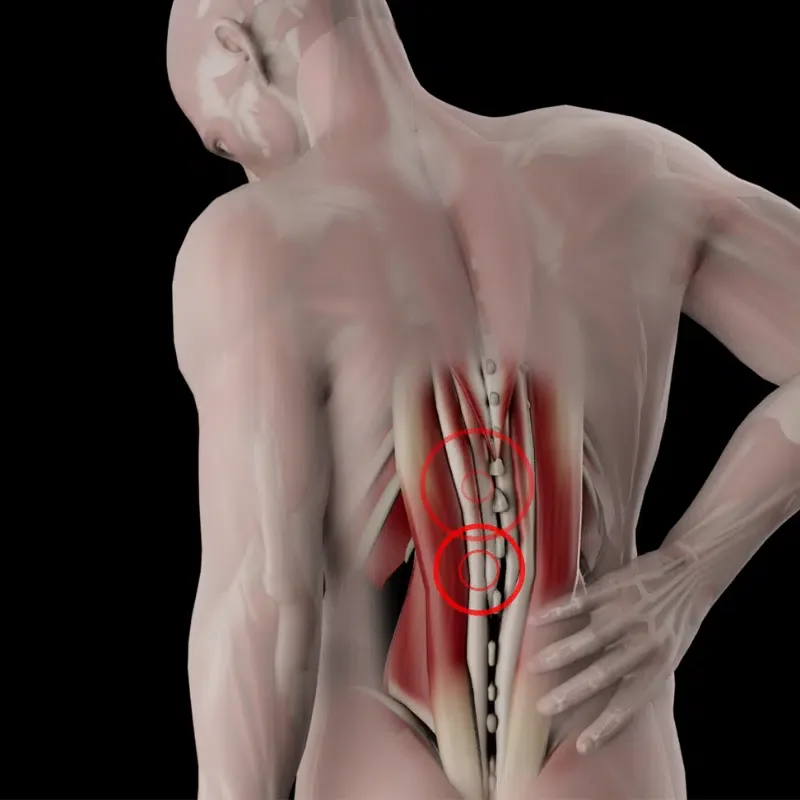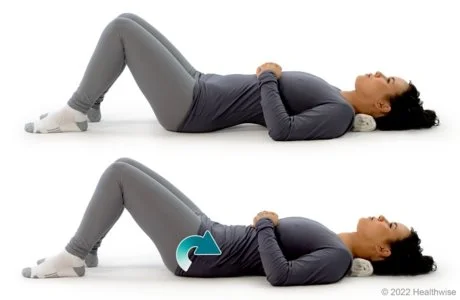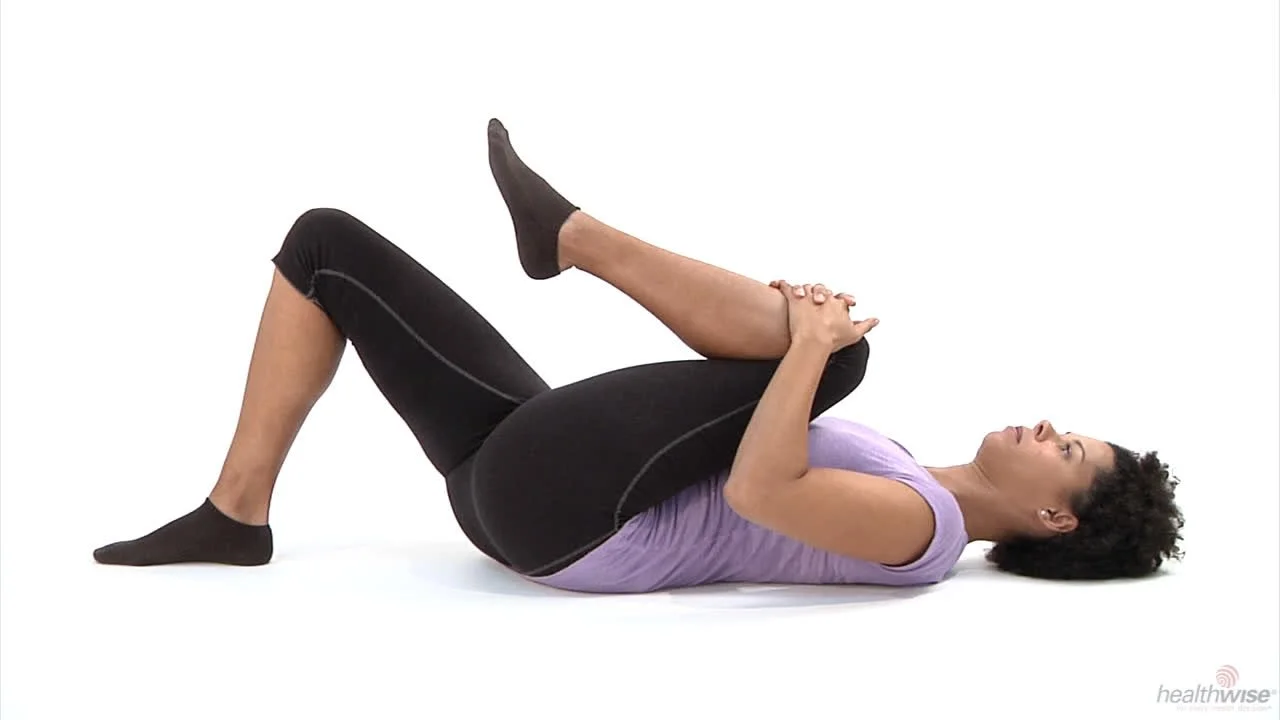Physio Exercises for Lower Back Pain: Safe Moves You Can Try
If lower back pain keeps creeping into your life, you’re not alone! It’s one of the UK’s most common health complaints, affecting people of all ages and activity levels. Having the right exercises can make a real difference (Low Back Pain – Overview, 2024).
At Formation Physio, we create specific, physio-led exercise plans designed with your body in mind, helping to keep your back safe while using our evidence-based clinical expertise. Unlike generic “back pain routines,” our approach focuses on understanding why your back hurts and guiding you through movements that target your exact needs.
Our team combines expert clinical knowledge with practical, easy-to-follow routines that help you move with confidence again. Whether your goal is to ease stiffness, strengthen your core, or prevent future flare-ups, we’ll show you how to do it safely and effectively.
Discover more about our Physiotherapy Services or explore our blog on Does Pilates Help with Back Pain?
Table Of Contents
Why Physiotherapy Exercises Work for Lower Back Pain
Physio Exercises for Lower Back Pain: Safe Moves You Can Try
Why Physiotherapy Exercises Work for Lower Back Pain
Strengthens Core and Back Muscles
Improves Flexibility and Mobility
Supports Better Posture
Prevents Recurrent Injuries
Evidence-Based Care
4. The Best Physio Exercises for Lower Back Pain Relief:
Pelvic Tilts – gentle spine mobilisation + core activation
Knee-to-Chest Stretch – easing stiffness in the lower spine
Knee-to-Chest Stretch – easing stiffness in the lower spine
Bridge Exercise – strengthens glutes + spinal support
Cat-Cow Stretch – spinal mobility + gentle relief
Child’s Pose – relaxation + spinal decompression
5. What Exercises Should You Avoid with Lower Back Pain?
6. FAQs
7. Why Choose Formation Physiotherapy for Back Pain Relief?
8. Sources
Why Physiotherapy Exercises Work for Lower Back Pain
Physiotherapy exercises are clinically proven to help reduce back pain, restore movement, and prevent future flare-ups.
Within treatment sessions, we carry out a comprehensive assessment to identify the underlying causes of your pain, whether that’s muscular weakness, poor movement control, or postural strain. From this assessment, we then create a personalised exercise plan tailored to your goals and activity levels. Progress is closely monitored and adjusted as your movement improves, ensuring long-term relief and prevention of recurrence (Senbursa et al., 2020). Tailored exercise programmes help by:
Strengthens Core and Back Muscles:
Having a strong core and back provides essential support for your spine. Targeted strengthening exercises help improve your spinal stability, which helps to reduce pressure on irritated tissues and enhance overall function. By developing strength in the deep stabilising muscles, such as the erector spinae and transverse abdominis, your body becomes better equipped to handle everyday loads and reduce the risk of future flare-ups (Frizziero et al., 2021).
Improves Flexibility and Mobility
A common cause of lower back pain is through muscle strains or ligament sprains. This can occur with overuse, lifting something heavy, twisting awkwardly or sudden movements. This will trigger a sharp pain at first, followed by stiffness and reduced mobility.
Supports Better Posture
A major contributing factor to lower back pain is prolonged sitting or poor postural habits. Physiotherapy exercises help retrain the postural muscles, enabling you to maintain a neutral spine and evenly distribute pressure throughout the back. Over time, this reduces strain on the joints and muscles and helps prevent the development of persistent lower back pain (Kripa & Kaur, 2021).
Prevents Recurrent Injuries
If you’ve recovered from lower back pain or want to prevent it in the first place, maintaining regular exercise is key to keeping it away. Physiotherapy-guided strength and mobility work helps build resilience, improve movement control, and protect against future flare-ups. At Formation Physiotherapy, we’ll equip you with the tools and strategies to manage your back long-term, whether that’s through tailored home exercises, Pilates, or progressive strength training.
Evidence-Based Care
Current CSP and NHS guidelines recommend exercise-based rehabilitation as one of the most effective treatments for non-specific lower back pain. Exercise helps reduce pain, improve function, and minimise recurrence, often outperforming passive treatments.
The Best Physio Exercises for Lower Back Pain Relief
Pelvic Tilts
How to do it:
Lie on your back with knees bent and feet flat on the floor.
Gently draw your lower back toward the mat by engaging your deep abdominal muscles (you’re not forcing, just a gentle flattening).
Hold for 3–5 seconds, then relax.
Repeat 10–15 times, breathing naturally.
Why it helps:
This exercise reintroduces movement to the lumbar spine safely, and activates core muscles that support your lower back. It’s a low-load way to start reawakening control and awareness.
Knee-to-Chest Stretch – easing stiffness in the lower spine
How to do it:
Lie on your back with knees bent.
Gently hug one knee toward your chest (holding behind the thigh or shin).
Hold for 15–20 seconds, then release and repeat on the other leg.
You can also bring both knees in together (if comfortable).
Why it helps:
This stretch gently releases tightness in the lower back and gluteal muscles. It’s especially helpful after long periods of sitting or sedentary habits.
Bridge Exercise – strengthens glutes + spinal support
How to do it:
Lie on your back, knees bent, feet hip-width apart, arms by your sides.
Engage your core and glutes, and lift your hips upward so your body forms a straight line from shoulders to knees.
Hold for 3–5 seconds, then lower slowly.
Repeat 10–12 times, focusing on control and avoiding any arching.
Why it helps:
Strong glutes and hamstrings are essential for supporting the lower back and stabilising movement. The bridge works these muscles with low spinal loading.
Cat-Cow Stretch – spinal mobility + gentle relief
How to do it:
Begin on hands and knees, with shoulders over wrists and hips over knees.
Inhale as you drop your belly and lift your chest (cow).
Exhale as you round your back and tuck your chin (cat).
Move smoothly between these positions 10–15 times.
Why it helps:
This flowing movement encourages flexibility throughout the spine, improves joint circulation, and can ease stiffness or tightness.
Child’s Pose – relaxation + spinal decompression
How to do it:
Kneel on your mat, big toes touching, knees apart.
Sit back onto your heels and reach your arms forward, letting your torso rest between thighs.
Hold for 30–60 seconds (or longer if comfortable) while focusing on deep breathing.
Why it helps:
This pose gently lengthens the spine and gives a moment of decompression — a restful, soothing position for the lower back.
Key Takeaway:
These exercises are safe foundations to start regaining confidence in your back’s movement. Over time, your physiotherapist may progress you into more advanced variations or tailored strength work.
What Exercises Should You Avoid with Lower Back Pain?
When your back is sensitive, certain movements or exercises can aggravate symptoms or delay recovery. Here are ones to approach with caution — or avoid until you have professional clearance:
Sit-ups or traditional crunches (placing high compressive force on lumbar discs)
Heavy deadlifts or loaded squats, especially without proper technique
Twisting under load (e.g. with weights)
High-impact activities if you don’t yet have sufficient support or stability
Overextending the back (e.g. extreme backbends)
Why this matters:
Your back pain may stem from muscle imbalances, joint irritation, or structural sensitivity. Self-prescribing generic routines via the internet can sometimes worsen the issue — what’s helpful for one person might harm another.
FAQs
What is the single best exercise for lower back pain?
There’s no one “magic” move for everyone, but pelvic tilts often serve as a safe, effective starting point for many individuals.
What are the big 3 exercises for lower back pain?
A common set includes the McGill Curl-Up, Side Plank, and Bird-Dog — these train core stability and resilience without excessive spinal stress.
What will a physio do for lower back pain?
A physiotherapist assesses your mobility, strength, posture, and movement patterns. Based on this, they design tailored exercises, apply manual techniques, and guide your progress to reduce pain and prevent reoccurrence.
Should I stretch my lower back if it hurts?
Gentle stretching can help, but avoid pushing into sharp pain. Always move within comfort — if symptoms worsen, stop and seek professional advice.
What is the best sleeping position for back pain?
Sleep on your side with a pillow between your knees or on your back with a pillow under your knees — both help maintain a neutral spine position.
Why Choose Formation Physiotherapy for Back Pain Relief?
At Formation Physiotherapy, we don’t believe in one-size-fits-all solutions. We combine clinical expertise, compassionate care, and movement-based approaches to support your long-term health.
From your very first assessment, you’ll receive a tailored plan — one that considers your body, goals, and lifestyle — not just generic exercises. Our focus is empowering you to move better, recover stronger, and prevent future problems.
Ready to make a change?
Book your physiotherapy assessment today and begin your journey towards a more resilient, pain-free back.
Sources
Frizziero, A., Pellizzon, G., Vittadini, F., Bigliardi, D., & Costantino, C. (2021). Efficacy of Core Stability in Non-Specific Chronic Low Back Pain. Journal of Functional Morphology and Kinesiology, 6(2), 37. https://doi.org/10.3390/jfmk6020037
Kripa, S., & Kaur, H. (2021). Identifying relations between posture and pain in lower back pain patients: a narrative review. Bulletin of Faculty of Physical Therapy, 26(1). https://doi.org/10.1186/s43161-021-00052-w
Low back pain - Overview. (2024, March). Guy’s and St Thomas’ NHS Foundation Trust. https://www.guysandstthomas.nhs.uk/health-information/low-back-pain
Mayo Clinic. (2023, August 15). Back Exercises in 15 Minutes a Day. Mayo Clinic. https://www.mayoclinic.org/healthy-lifestyle/adult-health/in-depth/back-pain/art-20546859
NICE. (2016). Low back pain and sciatica in over 16s: assessment and management. https://www.nice.org.uk/guidance/ng59/resources/low-back-pain-and-sciatica-in-over-16s-assessment-and-management-pdf-1837521693637
Senbursa, G., Pekyavas, N. O., & Baltaci, G. (2020). Comparison of Physiotherapy Approaches in Low Back Pain: A Randomized Controlled Trial. Korean Journal of Family Medicine, 42(2). https://doi.org/10.4082/kjfm.20.0025
Victora Ruas, C., & Vieira, A. (2017). Do Muscle Strength Imbalances and Low Flexibility Levels Lead to Low Back Pain? A Brief Review. Journal of Functional Morphology and Kinesiology, 2(3), 29. https://doi.org/10.3390/jfmk2030029
Video exercises for back pain. (n.d.). The Chartered Society of Physiotherapy. https://www.csp.org.uk/conditions/back-pain/video-exercises-back-pain







